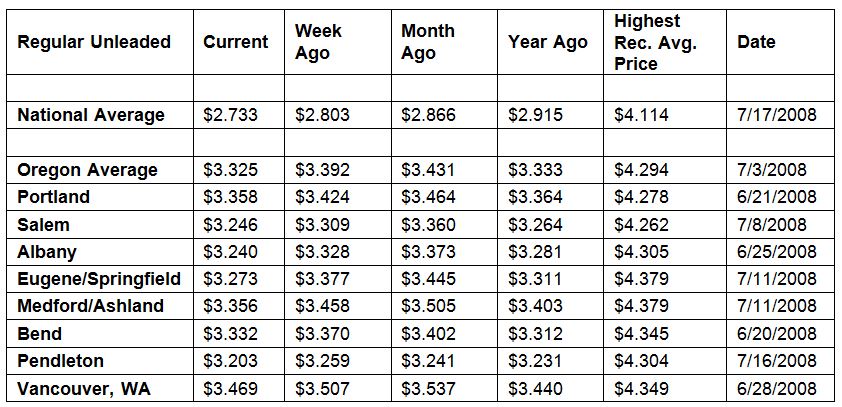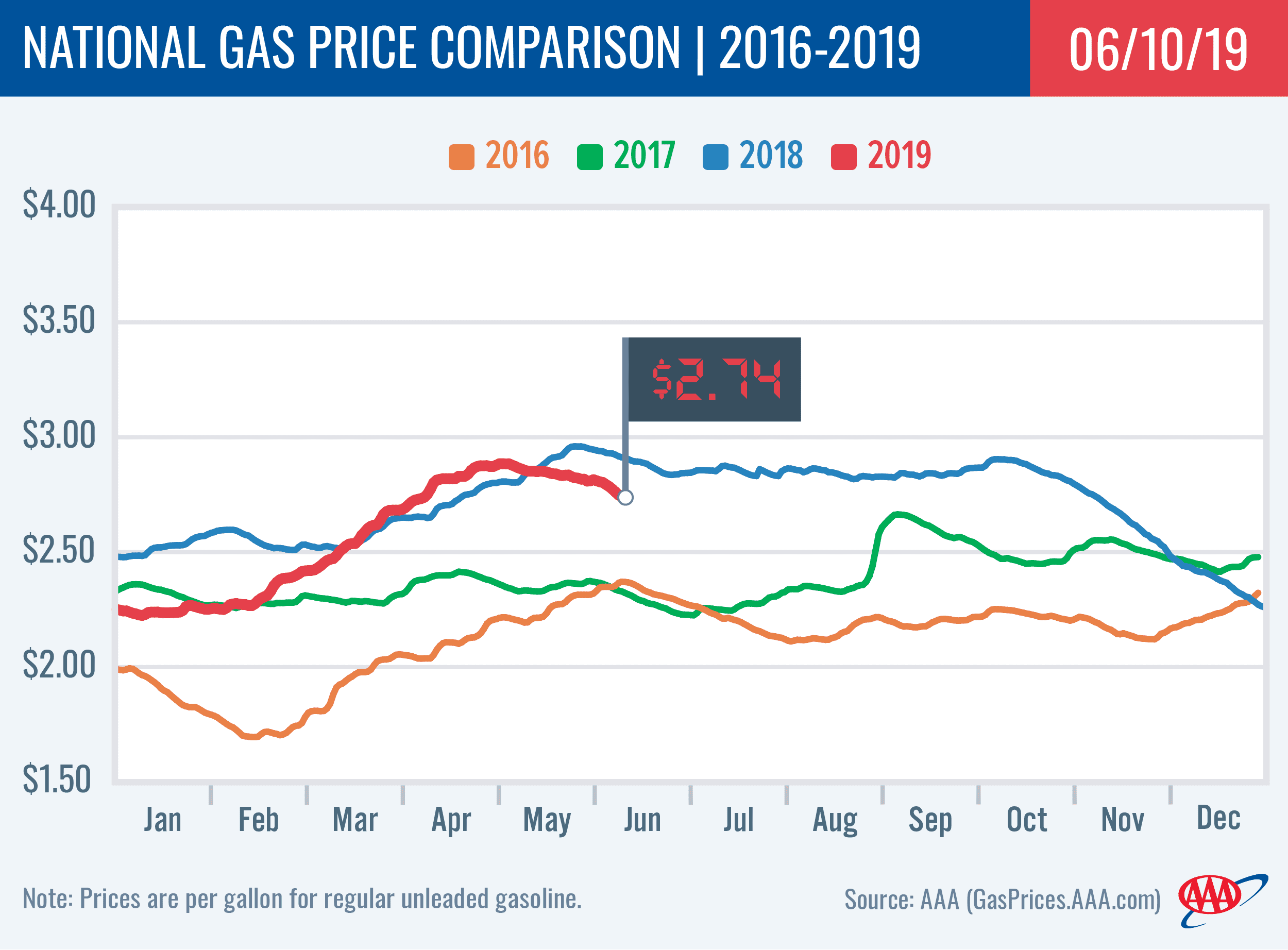PORTLAND, Ore., – Pump prices in Oregon and nearly every other state are cheaper than a week ago, month ago and year ago. For the week, the national average drops seven cents to $2.73 a gallon. The Oregon average also falls seven cents to $3.33 a gallon. Both averages are at two-month lows.
“Lower crude oil prices are putting downward pressure on pump prices. At the same time, supply in the U.S. is keeping pace with demand,” says Marie Dodds, public affairs director for AAA Oregon/Idaho. “Refinery utilization in the U.S. is at its highest level since early January, resulting in overall gasoline stocks at healthy levels to meet strong summer demand.”
For the last three weeks demand has remained relatively robust at 9.4 million b/d. Meanwhile, gasoline stocks have increased weekly with total inventories at nearly 4 million bbl ahead of the five-year average, according to U.S. Energy Information Administration (EIA) data.
Prices are lower week-over-week in all 50 states and the District of Columbia. Ohio (-22 cents) and Indiana (-17 cents) have the largest weekly decreases. This week there are nine states with an average above $3 a gallon, same as a week ago.
Oregon is one of 47 states and D.C. with lower prices now than a month ago. The national average is 13 cents less and the Oregon average is 11 cents less than a month ago. California (-21 cents) has the largest month-over-month decline. Wyoming (+8 cents) has the largest monthly gain.
The West Coast continues to have the highest pump prices in the nation with all of the region’s states landing on the top 10 most expensive list.
California tops the list for the 12th consecutive week with Hawaii, Washington, Nevada, Alaska and Oregon rounding out the top six. Oregon is sixth for the fifth week in a row. Pump prices in the region have mostly decreased on the week, with Oregon (-7 cents) seeing the largest drop.
The EIA’s most recent report for the week ending on May 31 showed that West Coast gasoline stocks increased by approximately 2.4 million bbl from the previous week and now sit at 30.8 million bbl. The current level is only 300,000 bbl less than last year’s level at this time, which could cause prices to decline further if there are no supply disruptions in the region this week.
The cheapest gas in the nation can be found in Mississippi ($2.32) and Alabama ($2.35). For the 17th week in a row, no states have an average below $2 a gallon.
Oregon is one 47 states and the District of Columbia where drivers are paying less than a year ago. The national average is 18 cents less and the Oregon average is a penny less than a year ago. Texas (-34 cents) has the largest year-over-year drop. California (+15 cents) has the largest increase.
Oil Market Dynamics
Crude prices ended last week with an increase on Friday after Saudi Arabia’s Energy Minister Khalid al-Falih told an audience at a conference in Russia that OPEC and its partners are close to an agreement to extend their current 1.2-million b/d production reduction pact through the end of 2019. The cartel is expected to formally announce its decision at its upcoming meeting in Vienna on June 25 and 26.
The price increase followed a week of losses for crude due to EIA’s weekly petroleum status report showing that total domestic crude inventories rose by 6.8 million bbl last week. At 483.3 million bbl, the current level is 46.7 million bbl higher than last year’s level at this time. An oversupply of crude has increased concerns that the market has a glut of oil – even as U.S.-imposed sanctions on Iran and Venezuela have worked to reduce global supply. Market observers will await OPEC’s meeting to determine how much global crude supplies may tighten further. If the glut persists, crude prices will likely continue to descend.
In related news, Baker Hughes, Inc. reported that the U.S. lost 11 oilrigs last week, bringing the total of active rigs to 789. There are 73 fewer oilrigs now than at this time last year.
At the close of Friday’s formal trading session on the NYMEX, WTI increased by $1.40 to settle at $53.99. At the close of Monday’s formal trading session on the NYMEX, WTI lost 73 cents to $53.26. Today crude is trading around $53, same as a week ago. Crude prices are down about 12 percent in the last month and are about $12 per barrel less than a year ago.
Drivers can find current gas prices along their route with the free AAA Mobile app for iPhone, iPad and Android. The app can also be used to map a route, find discounts, book a hotel and access AAA roadside assistance. Learn more at AAA.com/mobile.
Diesel
For the week, the national average drops four cents to $3.04 a gallon. Oregon’s average falls three cents to $3.26. A year ago the national average for diesel was $3.20 and the Oregon average was $3.43.
Find current fuel prices at GasPrices.AAA.com.
AAA news releases, high resolution images, broadcast-quality video, fact sheets and podcasts are available on the AAA NewsRoom at NewsRoom.AAA.com.
Find local news releases at https://www.oregon.aaa.com/category/news-releases/



